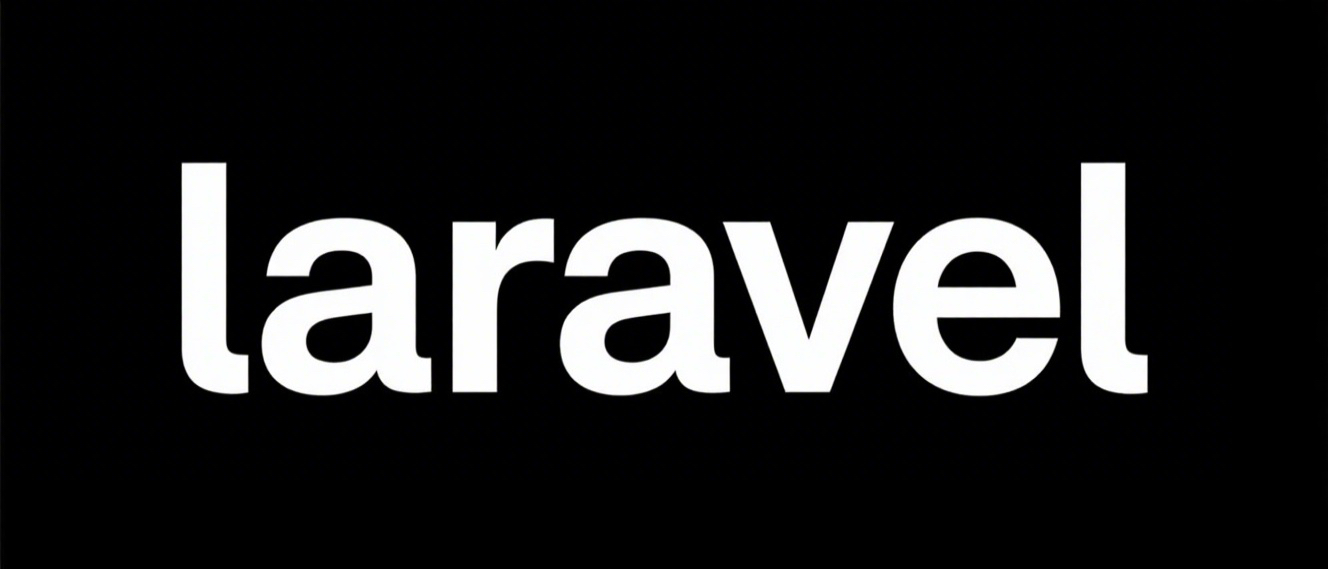Binding and Resolving Dependencies in the Laravel Service Container
Jul 13, 2025 am 01:49 AMThe service container in Laravel manages class dependencies through dependency injection, improving flexibility and maintainability. It allows developers to bind services using simple bindings, singletons, or interface-to-implementation mappings, typically within service providers. Dependencies are automatically resolved when type-hinted in constructors or method injections, while manual resolution can be done via the resolve() helper. Common issues include incorrect bindings, missing namespaces, or circular dependencies, which can be debugged by verifying service provider registrations and class paths.

When working with Laravel, understanding how to bind and resolve dependencies in the service container is crucial. It's what allows for powerful dependency injection, cleaner code, and better testability.

What Is the Service Container?
Laravel’s service container is a tool for managing class dependencies and performing dependency injection. Instead of hard-coding dependencies inside a class, Laravel lets you "inject" them through the container, making your code more flexible and easier to maintain.

For example, instead of doing this:
class OrderController {
public function __construct() {
$this->mailer = new Mailer();
}
}You can let the container handle it:

class OrderController {
public function __construct(Mailer $mailer) {
$this->mailer = $mailer;
}
}This way, if you ever want to swap out the Mailer implementation, you only need to rebind it in one place — not hunt through your codebase.
Binding Basics: How to Register Services
Binding tells the container how to get a certain type of object when it's needed. You typically do this in a service provider.
Here are a few common ways to bind:
Simple binding
$this->app->bind('App\Services\PaymentService', function ($app) { return new PaymentService(); });Binding a singleton (only created once)
$this->app->singleton('App\Services\CacheService', function ($app) { return new RedisCache(); });Binding an interface to a concrete implementation
$this->app->bind( 'App\Contracts\NotificationSender', 'App\Services\SmsNotificationService' );
You don’t always have to write closures — if the class doesn't require any special setup, just pass the class name directly.
Resolving Dependencies Automatically
Once something is bound, Laravel will automatically resolve it when it's needed — like when resolving controllers, jobs, event listeners, and more.
Let’s say you have a controller that needs a service:
public function __construct(NotificationSender $notifier) {
$this->notifier = $notifier;
}As long as NotificationSender is bound correctly, Laravel will figure out which implementation to use and inject it.
If you're outside a constructor — say, in a command or somewhere else — you can still pull things from the container manually using the resolve() helper:
$service = resolve('App\Services\PaymentService');But remember: automatic resolution only works if the class is type-hinted in a place Laravel knows to inspect — like constructors or method injections.
When Things Go Wrong: Common Issues
Sometimes the container can't resolve a dependency. Here are some common reasons why:
- The class isn't bound properly.
- You're trying to resolve an interface without a binding.
- The class doesn't exist or has incorrect namespace.
- There's a circular dependency (A depends on B which depends on A).
To debug, check:
- Your service providers — did you actually register the binding?
- The namespaces — are they correct?
- If you’re using an interface, make sure it’s bound to a concrete class.
Also, if you're manually instantiating a class that expects injected dependencies, Laravel won't help — you’ll need to fetch those yourself from the container.
That's the core of binding and resolving in Laravel’s service container. It looks a bit magic at first, but once you understand how the container resolves dependencies and where to set up bindings, it becomes second nature.
The above is the detailed content of Binding and Resolving Dependencies in the Laravel Service Container. For more information, please follow other related articles on the PHP Chinese website!

Hot AI Tools

Undress AI Tool
Undress images for free

Undresser.AI Undress
AI-powered app for creating realistic nude photos

AI Clothes Remover
Online AI tool for removing clothes from photos.

Clothoff.io
AI clothes remover

Video Face Swap
Swap faces in any video effortlessly with our completely free AI face swap tool!

Hot Article

Hot Tools

Notepad++7.3.1
Easy-to-use and free code editor

SublimeText3 Chinese version
Chinese version, very easy to use

Zend Studio 13.0.1
Powerful PHP integrated development environment

Dreamweaver CS6
Visual web development tools

SublimeText3 Mac version
God-level code editing software (SublimeText3)
 Working with pivot tables in Laravel Many-to-Many relationships
Jul 07, 2025 am 01:06 AM
Working with pivot tables in Laravel Many-to-Many relationships
Jul 07, 2025 am 01:06 AM
ToworkeffectivelywithpivottablesinLaravel,firstaccesspivotdatausingwithPivot()orwithTimestamps(),thenupdateentrieswithupdateExistingPivot(),managerelationshipsviadetach()andsync(),andusecustompivotmodelswhenneeded.1.UsewithPivot()toincludespecificcol
 Sending different types of notifications with Laravel
Jul 06, 2025 am 12:52 AM
Sending different types of notifications with Laravel
Jul 06, 2025 am 12:52 AM
Laravelprovidesacleanandflexiblewaytosendnotificationsviamultiplechannelslikeemail,SMS,in-appalerts,andpushnotifications.Youdefinenotificationchannelsinthevia()methodofanotificationclass,andimplementspecificmethodsliketoMail(),toDatabase(),ortoVonage
 Understanding Dependency Injection in Laravel?
Jul 05, 2025 am 02:01 AM
Understanding Dependency Injection in Laravel?
Jul 05, 2025 am 02:01 AM
Dependency injection automatically handles class dependencies through service containers in Laravel without manual new objects. Its core is constructor injection and method injection, such as automatically passing in the Request instance in the controller. Laravel parses dependencies through type prompts and recursively creates the required objects. The binding interface and implementation can be used by the service provider to use the bind method, or singleton to bind a singleton. When using it, you need to ensure type prompts, avoid constructor complications, use context bindings with caution, and understand automatic parsing rules. Mastering these can improve code flexibility and maintenance.
 Strategies for optimizing Laravel application performance
Jul 09, 2025 am 03:00 AM
Strategies for optimizing Laravel application performance
Jul 09, 2025 am 03:00 AM
Laravel performance optimization can improve application efficiency through four core directions. 1. Use the cache mechanism to reduce duplicate queries, store infrequently changing data through Cache::remember() and other methods to reduce database access frequency; 2. Optimize database from the model to query statements, avoid N 1 queries, specifying field queries, adding indexes, paging processing and reading and writing separation, and reduce bottlenecks; 3. Use time-consuming operations such as email sending and file exporting to queue asynchronous processing, use Supervisor to manage workers and set up retry mechanisms; 4. Use middleware and service providers reasonably to avoid complex logic and unnecessary initialization code, and delay loading of services to improve startup efficiency.
 Managing database state for testing in Laravel
Jul 13, 2025 am 03:08 AM
Managing database state for testing in Laravel
Jul 13, 2025 am 03:08 AM
Methods to manage database state in Laravel tests include using RefreshDatabase, selective seeding of data, careful use of transactions, and manual cleaning if necessary. 1. Use RefreshDatabasetrait to automatically migrate the database structure to ensure that each test is based on a clean database; 2. Use specific seeds to fill the necessary data and generate dynamic data in combination with the model factory; 3. Use DatabaseTransactionstrait to roll back the test changes, but pay attention to its limitations; 4. Manually truncate the table or reseed the database when it cannot be automatically cleaned. These methods are flexibly selected according to the type of test and environment to ensure the reliability and efficiency of the test.
 Choosing between Laravel Sanctum and Passport for API authentication
Jul 14, 2025 am 02:35 AM
Choosing between Laravel Sanctum and Passport for API authentication
Jul 14, 2025 am 02:35 AM
LaravelSanctum is suitable for simple, lightweight API certifications such as SPA or mobile applications, while Passport is suitable for scenarios where full OAuth2 functionality is required. 1. Sanctum provides token-based authentication, suitable for first-party clients; 2. Passport supports complex processes such as authorization codes and client credentials, suitable for third-party developers to access; 3. Sanctum installation and configuration are simpler and maintenance costs are low; 4. Passport functions are comprehensive but configuration is complex, suitable for platforms that require fine permission control. When selecting, you should determine whether the OAuth2 feature is required based on the project requirements.
 Implementing Database Transactions in Laravel?
Jul 08, 2025 am 01:02 AM
Implementing Database Transactions in Laravel?
Jul 08, 2025 am 01:02 AM
Laravel simplifies database transaction processing with built-in support. 1. Use the DB::transaction() method to automatically commit or rollback operations to ensure data integrity; 2. Support nested transactions and implement them through savepoints, but it is usually recommended to use a single transaction wrapper to avoid complexity; 3. Provide manual control methods such as beginTransaction(), commit() and rollBack(), suitable for scenarios that require more flexible processing; 4. Best practices include keeping transactions short, only using them when necessary, testing failures, and recording rollback information. Rationally choosing transaction management methods can help improve application reliability and performance.
 Handling HTTP Requests and Responses in Laravel.
Jul 16, 2025 am 03:21 AM
Handling HTTP Requests and Responses in Laravel.
Jul 16, 2025 am 03:21 AM
The core of handling HTTP requests and responses in Laravel is to master the acquisition of request data, response return and file upload. 1. When receiving request data, you can inject the Request instance through type prompts and use input() or magic methods to obtain fields, and combine validate() or form request classes for verification; 2. Return response supports strings, views, JSON, responses with status codes and headers and redirect operations; 3. When processing file uploads, you need to use the file() method and store() to store files. Before uploading, you should verify the file type and size, and the storage path can be saved to the database.






